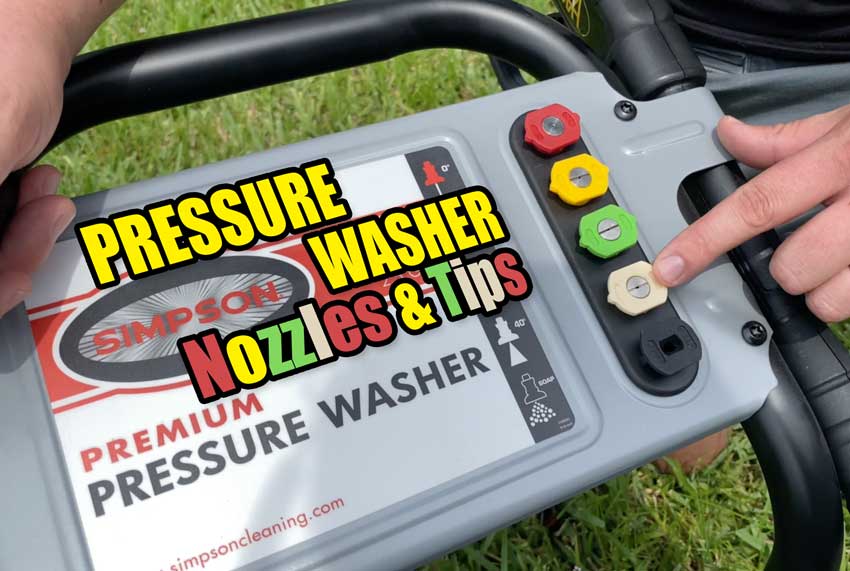So you finally picked up the best pressure washer and you’re ready to clean. Now, which pressure washer nozzle or tip should you choose to get the job done? There’s not really any secret sauce—and choosing the right tip might be easier than you think! We even include a pressure washer nozzle chart to help you understand the differences.
Check out our best electric pressure washer article to see our top picks
All About Pressure Washer Nozzles and Tips
Pressure Washer Tips and Nozzles Overview
Pressure washers typically come with a set of nozzles. Just how many may vary, but there are six basic types: 0°, 15°, 25°, 40°, soap, and Turbo. We’ll go over each one and demonstrate how it works, what it’s for, and why you might want to use one type over another.
The four nozzles with various degree markings and colors shoot out water in a triangle pattern that matches the label. So when you see 0°, 25°, etc—that’s describing the spray pattern. Turbo nozzles use a rapid circular spinning motion that makes a 0° nozzle cover like a 25°. These five are the ones that take care of removing build-up.
The soap nozzle mixes with soap or another detergent to put a coating of suds on whatever you’re cleaning and isn’t actually designed to remove gunk on its own.
Pressure Washer Nozzles – Tip By Tip
Red 0° Nozzle
Getting back to nozzles, selecting the right one for the job is all about getting the pressure you want. Let’s start with the 0° nozzle. It gives you the absolute highest pressure. When you see the PSI rating for a pressure washer—that max rating was achieved using the 0° spray tip.
Use a Red 0° nozzle only for reaching high areas like soffits where that extra pressure gives you better access. It can also really help remove super-tough stains and debris from concrete and metal. Get it too close, however, and you can just about carve your initials in your driveway!
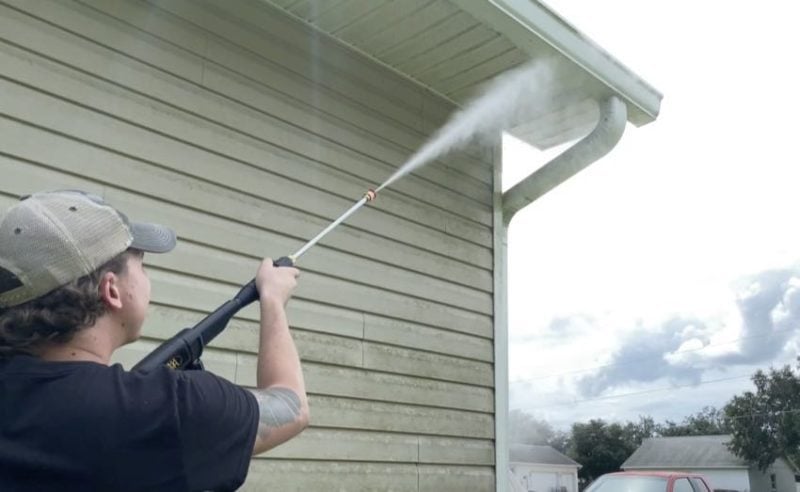
You also don’t want to use this particular pressure washer tip on painted surfaces, siding, or wood since it can easily remove coatings and ruin softer materials. It goes without saying that you want to use close-toed shoes when using a pressure washer—and really be careful that the 0° tip never touches any part of your person or anyone else.
Yellow 15° Nozzle
The Yellow 15° pressure washer nozzle works really well for tough stains like mold and mildew on PVC fences. It also gives you a very strong spray, so don’t “linger” in one area for too long. That 15° tip can start to remove aggregate and paint from concrete if you’re not careful.
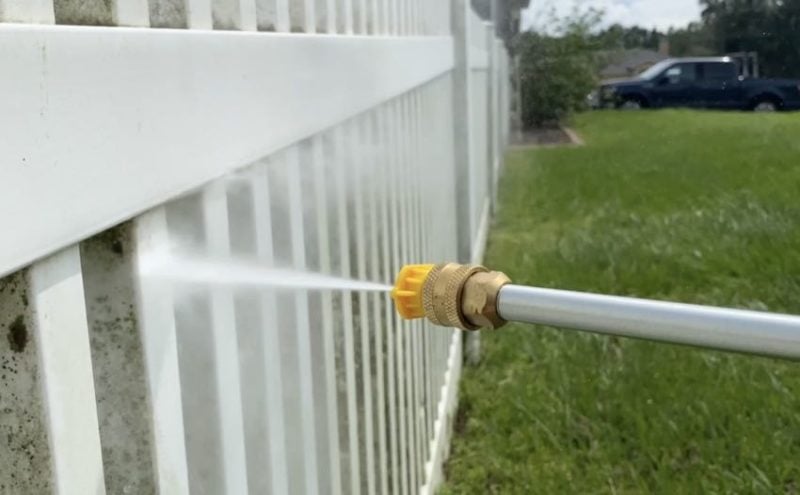
When using it on siding, make sure you keep the wand far enough away to provide ample spread across the vinyl. We don’t recommend this nozzle for use on painted wood siding—unless you’re prepping it for painting.
Green 25° Nozzle
Use the Green 25° nozzle to safely clean siding, decks, sidewalks, or driveways. It also works well to remove stubborn dirt or mud from off-road vehicles and wheels. Just keep a safe distance away to ensure you don’t damage the paint. This is a great all-around nozzle and a great go-to if you’re unsure of where to start.
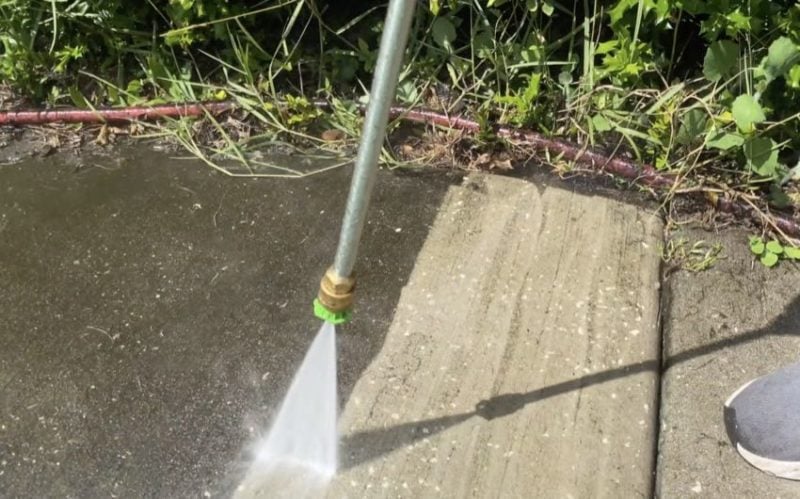
White 40° Nozzle
The 40° White pressure washer nozzle gives you the widest spray pattern. Use this tip for spraying and hosing down the car, washing windows, and anywhere you want to rinse something off. If a surface is delicate, this nozzle lets you apply a wider spray with less pressure so you don’t damage it.
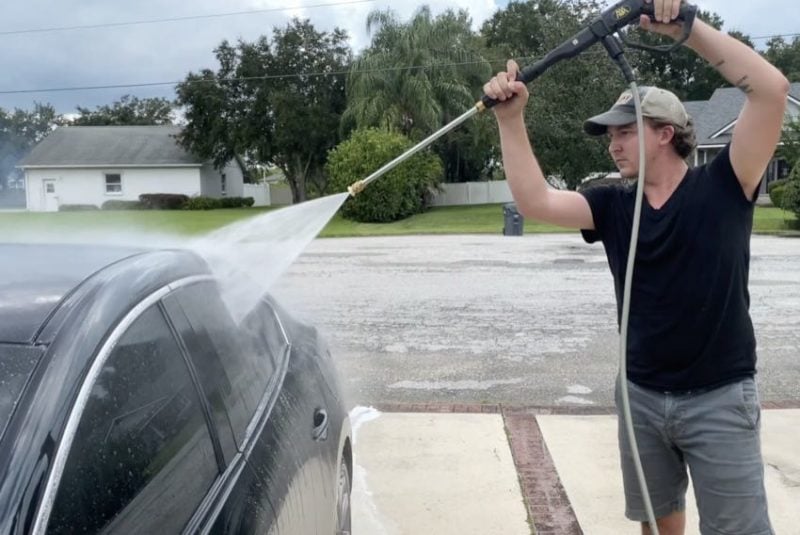
Specialty Pressure Washer Nozzles
There are two more pressure washer nozzles or tips I also want to talk about. These provide more than simple spray patterns.
Turbo Nozzle
OK, let’s talk about that Turbo nozzle. This is really a great invention because it takes the power of 0° tip and rotates it rapidly to cover a conical roughly the diameter provided by a 25° tip. That means you can rapidly clean larger areas with a higher level of pressure since you get both pressure and coverage.
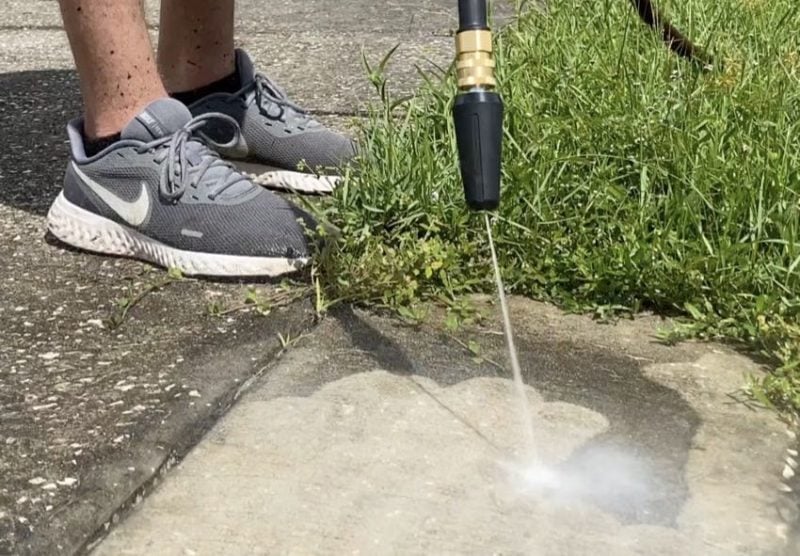
Use it on the same areas you’d use a 0° or 15° nozzle—just test the area first to ensure you don’t damage the surface. We love how it helps clean concrete landscape edging—just move it along at a rapid pace to avoid damaging the softer concrete.
Soap Nozzle
If you happen to have a soap nozzle, these typically work alongside a delivery system when spraying detergent or a foaming agent along with the water. Most pressure washers either have an onboard detergent tank or allow you to connect a tube directly to a detergent container. It lets you quickly and easily spray down a vehicle, boat, or surface without fear of damaging delicate paints or materials with a high-pressure nozzle.
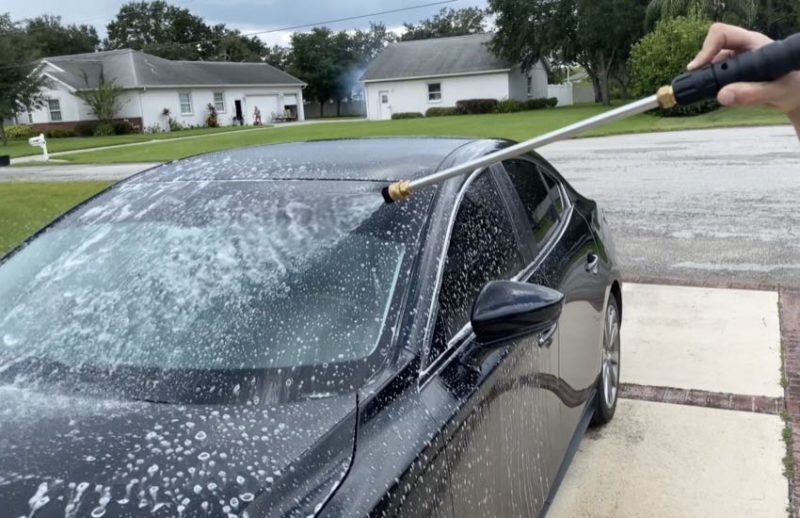
Foam Cannons
You can also grab third-party foam cannons that sit at the end of the wand and include their own low-pressure spray nozzle.
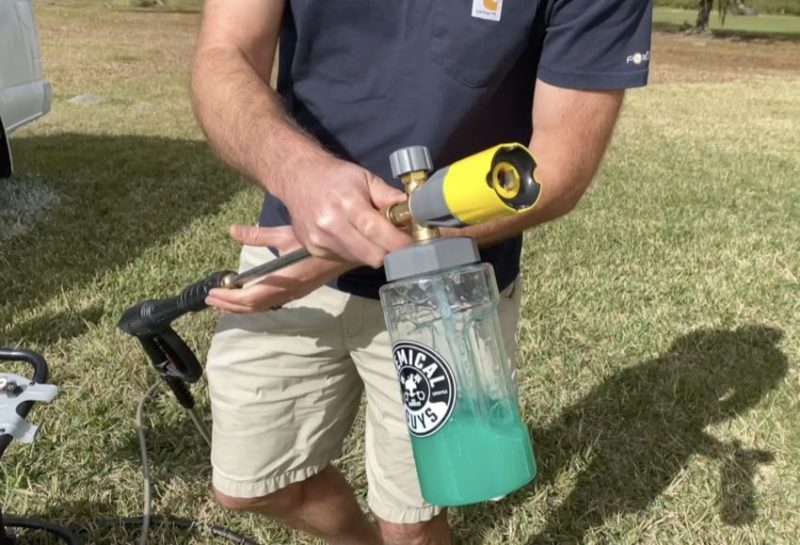
Final Thoughts on How to Choose the Right Pressure Washer Tips
OK, let’s wrap it all up. The trick with choosing the right pressure washer nozzle or tip is to find the widest nozzle you can use that still cleans the surface effectively. That way, you make the most efficient use of your pressure washer and your time.
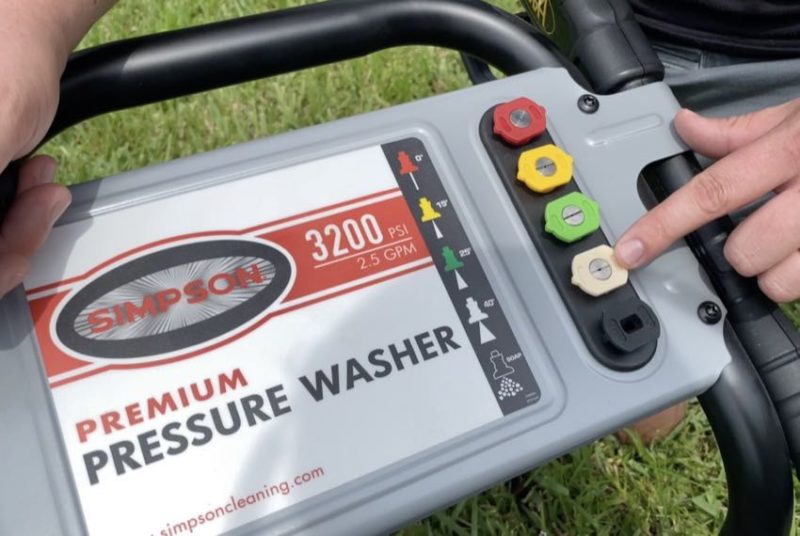
If you’re working on a surface you’ve never cleaned before, try a 40° pressure washer nozzle in a spot that’s out of the way first. Hit the trigger with the nozzle about 2 feet away from the surface and push in closer until you see it starting to clean. If you don’t see results by the time the nozzle is a few inches away, try the next size down and repeat until you’re making headway without risking damage to the surface.
If you do notice you’re starting to damage what you’re working on, back off immediately and either clean from a little farther away or switch to a wider nozzle.
So there you have it—the big secret is to take the time to experiment. Every pressure washer is different and there’s no one universal answer for every situation. If you have any questions or feedback for us, feel free to drop a comment below, and as always, thanks for watching!
For some great pressure washers, be sure to check out the line of Simpson Pressure Washers available here.

